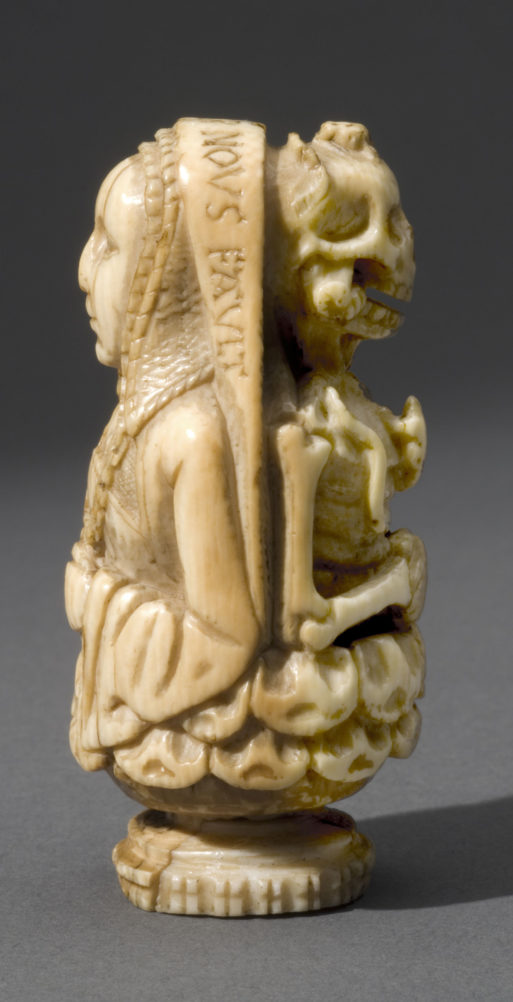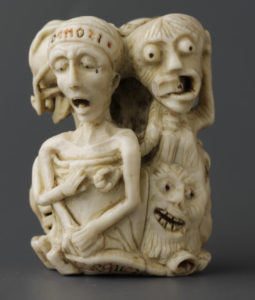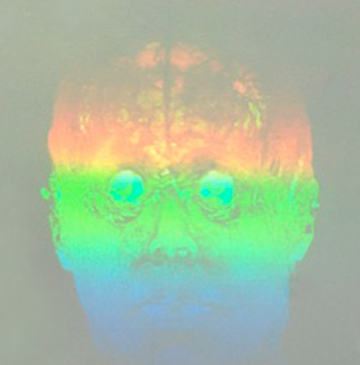
An ivory bead from Renaissance Europe
Credit: bowdoinorient.com
A liberal arts college in New England is intentionally making its students think about death and their own mortality. Bowdoin College in Brunswick, Maine, is currently hosting an art exhibition titled “The Ivory Mirror: The Art of Mortality in Renaissance Europe” at its College Museum of Art. The exhibit is comprised of a multitude of paintings, manuscripts, sculptures, carvings and more from the Renaissance era.
The first artifacts displayed in the exhibit are ivory prayer beads. One such bead features a human on one side, and a skeleton on the other. The message is clear. Death is (or could be) right around the corner.
“Death has a leveling effect, and death comes upon you unexpectedly, so you should be prepared,” said exhibition curator Stephen Perkinson. “That basic message is sort of being told by these beads.”
Perkinson believes that the ideas of mortality and death are important topics for young people to consider. Questions about life, such as, “Who am I?” “What do I want to accomplish?” or “What do I want to leave behind?” are vital to young people’s understanding of both the world and themselves.
“This sort of exhibition…[gets] at these questions that I think, in my experience, most Bowdoin students are to some degree wrestling with already,” said Perkinson.
Perhaps there is no better place than a college campus to hold this kind of exhibition. The time spent at college is a period of great mental and, perhaps, spiritual growth for many students. And many of them are still defining who they are.
Centuries Old Questions
One thing that makes this exhibit particularly stimulating is the fact that the artifacts on display are so old.
“I hope that the show will provide students here with an opportunity to realize that…these are questions that have been faced by generations and generations of young people over many centuries,” said Anne Goodyear, co-director of the museum. “The message of the show could not be better positioned on a college campus, where young people are defining their sense of self.”
Another fascinating aspect of the exhibit is that the college took a multidisciplinary approach to implementing it. Perkinson worked with numerous professors from different departments, including Romance languages and literature, art history, English and philosophy, to incorporate the works into their respective course curriculums.

An ivory rosary bead from the first half of the 16th century
Credit: bowdoin.edu
Those involved with the exhibit believe the multidisciplinary approach encourages students of all majors (not just art history) to engage in important conversations about death and dying.
“When we can find ways to have conversations with other departments, that’s, I think, really rewarding,” said Frank Goodyear, co-director of the museum, “because we’ve always seen the arts as a platform for important conversations that extend beyond just simply art history…So it’s really exciting to be working with…departments around campus who are thinking about themes related to mortality.”
Modernity Has A Voice, Too
Although most of the pieces on display at “The Ivory Mirror” exhibit are from the Renaissance, there are also modern works. Featured as the final part of the exhibit, these highlight the fact that themes of death and mortality have and always will be an intrinsic focus of the art world. To further illustrate this, Perkinson calls this part of the exhibit its “afterlife.”
The last piece on display is titled “When H2 Leaves O.” The creation of Dutch artist Folkert de Jong, it serves to reinforce the show’s title, “The Ivory Mirror.”

“When H2 Leaves O”
Credit: community.bowdoin.edu
The work is a holographic MRI of the artist’s head that appears next to the viewer’s own reflection. This acts not only as a literal mirror, but also a symbolic one, in that a true “mirror” is meant to show us who we really are. And what really lies beneath our faces are our skulls. What’s beneath the skin is the reality of existence.
This can be a bit unnerving for people, but it does exactly what the artist intended: to encourage us to think about our own mortality.
“The Ivory Mirror” exhibition is a great concept. It is important for all of us, regardless of age, to consider death and realize it can happen at any time. Death waits for no one, and the sooner we realize this, the more fruitful and perhaps happier our lives can become.
“The Ivory Mirror: The Art of Mortality in Renaissance Europe” is on display until November 26.

 “The Ivory Mirror” Exhibit Asks Students To Consider Death
“The Ivory Mirror” Exhibit Asks Students To Consider Death


 John Mulaney’s “Funeral Planning” on Netflix: No Real Plan
John Mulaney’s “Funeral Planning” on Netflix: No Real Plan

 Composting Bodies Is Now Legal in a Dozen States
Composting Bodies Is Now Legal in a Dozen States














